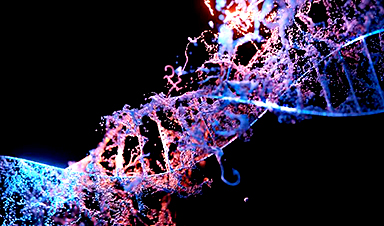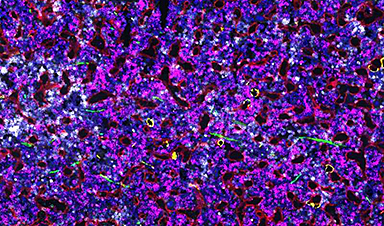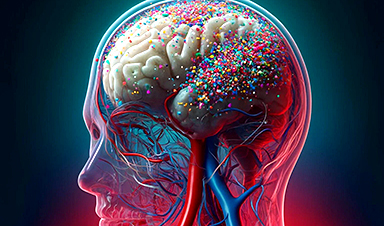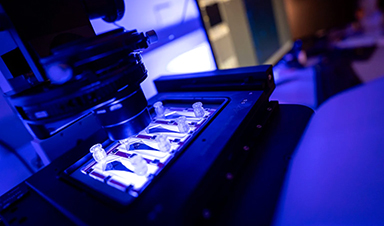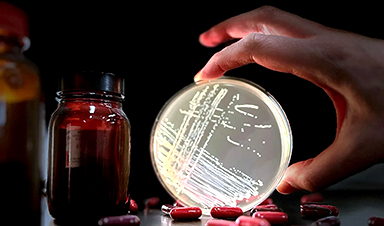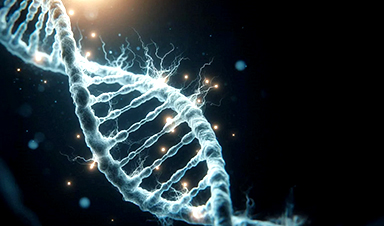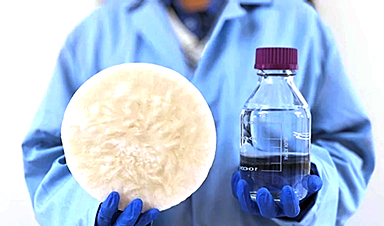In a study available in the journal Materials Today: Proceedings, silver nanoparticles (Ag NPs) were fabricated using a green method using Citrus X sinensis.
Methylthioninium Chloride (MB) Dyes Threatening the Environment
Dye and sewage drainage into waterways by factories is a significant ecological issue. The dye produced by large textile factories and other businesses has major environmental consequences.
MB dyes, which pose major ecological concerns, are among the substantial quantities discharged. The cationic MB (methylthioninium chloride) dye is very acidic in nature, causing damage to underwater life as well as the well-being of humans.
How can Nanoparticles Help in Mitigating Pollution?
Nanotechnology has an important and decisive role in pollution elimination. Nanoparticle (NP) research has gained popularity in the last couple of decades owing to the exceptional properties of nanoparticles and their numerous applications. The large surface-to-volume ratio of NPs boosts their beneficial qualities.
Green manufactured NPs have been proven to have greater relevance in the breakdown of dyes than chemically fabricated NPs, resulting in a novel strategy for tackling water contamination concerns.
Biological Synthesis of Nanoparticles – The Way Forward
Chemical techniques of NP fabrication use more energy, are more expensive and employ hazardous chemicals. In comparison, the biological creation of NPs uses lesser energy, is inexpensive, and uses only harmless chemicals.
Many botanical components, including stems, roots, leaves, and flowers were employed in the extract to fabricate NPs. Several therapeutic plants, including Lippia citriodora, Alpinia nigra, Kalanchoe pinnata, and Gmelina arborea, have recently been used to synthesize silver nanoparticles (Ag NPs).
The Role of Silver Nanoparticles
Ag NPs have piqued the interest of scientists due to their distinctive qualities such as chemical and photonic stability, as well as catalytic, optoelectronic and antibacterial characteristics. The catalytic process has been identified as among the most successful dye removal strategies. Owing to their active pore locations, Ag NPs maximize their catalytic properties.
Using Citrus X sinensis for Synthesis of Silver Nanoparticles
Citrus is an evergreen plant that is thriving in the Brazilian area. It can also be seen in South China, Myanmar, and Northeast India. This species belongs to the Rutaceae family. Colloquially referred to as sweet orange, Citrus X sinensis has been claimed to possess medicinal and antioxidant properties.
The occurrence of carbohydrates, alkaloids, flavonoids, phenolics, tannins, triterpenes, and saponins was discovered in Citrus X sinensis extracts. The fruits of Citrus X sinensis were utilized to fabricate Ag NPs in this research. After experiencing a photocatalyzed reduction in ultraviolet light, the Citrus X sinensis-coated Ag NPs were used to break down the MB dye.
Examining the Catalytic Activity of Produced Silver Nanoparticles
The catalytic performance of green fabricated Ag NPs for MB was investigated under direct sunlight. In 100 milliliters of 30 ppm methylthioninium chloride dye solution, a 10-milligram catalyst was introduced. Prior to illumination, the solution was stirred for 15 minutes in darkness to reach adsorption and desorption equilibrium.
The process continued to progress when exposed to sunshine. The dye breakdown process was conducted by subjecting the solution to sunlight at different time durations. The solution was centrifuged after each exposure to sunlight to remove the catalyst.
Key Findings of the Study
For the synthesis of Ag NPs in this study, a green and efficient process was adopted. Citrus X sinensis fruit extract was used to successfully generate Ag NPs. These fruit extracts were demonstrated to cause a reduction of AgNO3 to produce Ag NPs.
Characterization results from ultraviolet-visible analysis demonstrated that the Citrus X sinensis fruit extract had a significant influence on the stability of the synthesized nanoparticles. SEM scans confirmed the formation of sphere-shaped NPs with a uniform size distribution.
Green Ag NPs were shown to be efficient in catalyzed reduction of methylthioninium chloride dyes. Moreover, the nanoscale catalyst reusability investigation revealed that the catalyst is robust enough for repetitive usage. The photocatalyzed breakdown data showed that Ag NPs deteriorated 82.2 percent of the MB dye in 75 minutes.
This study’s results suggested that biologically synthesized silver nanoparticles made from Citrus X sinensis fruit extract are suitable for photocatalytic activity.
News
How to prevent chronic inflammation from zombie-like cells that accumulate with age
In humans and other multicellular organisms, cells multiply. This defining feature allows embryos to grow into adulthood, and enables the healing of the many bumps, bruises and scrapes along the way. Certain factors can [...]
Breakthrough for long Covid patients who lost sense of smell
A breakthrough nasal surgery has restored the sense of smell for a dozen long Covid patients. Experts at University College London Hospitals NHS Foundation Trust successfully employed a technique typically used for correcting blocked nasal passages, [...]
Scientists Invent Plastic That Can Dissolve In Seawater In Just A Few Hours
Plastic waste and pollution in the sea have been among the most serious environmental problems for decades, causing immense damage to marine life and ecosystems. However, a breakthrough discovery may offer a game-changing solution. [...]
Muscles from the 3D printer
Swiss researchers have developed a method for printing artificial muscles out of silicone. In the future, these could be used on both humans and robots. Swiss researchers have succeeded in printing artificial muscles out [...]
Beneficial genetic changes observed in regular blood donors
Researchers at the Francis Crick Institute have identified genetic changes in blood stem cells from frequent blood donors that support the production of new, non-cancerous cells. Understanding the differences in the mutations that accumulate [...]
Shocking Amounts of Microplastics in the Brain – It Could Be Increasing Our Risk of Dementia
The brain has higher concentrations of plastic particles compared to other organs, with increased levels found in dementia patients. In a comprehensive commentary published in Brain Medicine, researchers highlight alarming new evidence of microplastic accumulation [...]
Baffling Scientists for Centuries: New Study Unravels Mystery of Static Electricity
ISTA physicists demonstrate that contact electrification depends on the contact history of materials. For centuries, static electricity has intrigued and perplexed scientists. Now, researchers from the Waitukaitis group at the Institute of Science and [...]
Tumor “Stickiness” – Scientists Develop Potential New Way To Predict Cancer’s Spread
UC San Diego researchers have developed a device that predicts breast cancer aggressiveness by measuring tumor cell adhesion. Weakly adherent cells indicate a higher risk of metastasis, especially in early-stage DCIS. This innovation could [...]
Scientists Just Watched Atoms Move for the First Time Using AI
Scientists have developed a groundbreaking AI-driven technique that reveals the hidden movements of nanoparticles, essential in materials science, pharmaceuticals, and electronics. By integrating artificial intelligence with electron microscopy, researchers can now visualize atomic-level changes that were [...]
Scientists Sound Alarm: “Safe” Antibiotic Has Led to an Almost Untreatable Superbug
A recent study reveals that an antibiotic used for liver disease patients may increase their risk of contracting a dangerous superbug. An international team of researchers has discovered that rifaximin, a commonly prescribed antibiotic [...]
Scientists Discover Natural Compound That Stops Cancer Progression
A discovery led by OHSU was made possible by years of study conducted by University of Portland undergraduates. Scientists have discovered a natural compound that can halt a key process involved in the progression [...]
Scientists Just Discovered an RNA That Repairs DNA Damage – And It’s a Game-Changer
Our DNA is constantly under threat — from cell division errors to external factors like sunlight and smoking. Fortunately, cells have intricate repair mechanisms to counteract this damage. Scientists have uncovered a surprising role played by [...]
What Scientists Just Discovered About COVID-19’s Hidden Death Toll
COVID-19 didn’t just claim lives directly—it reshaped mortality patterns worldwide. A major international study found that life expectancy plummeted across most of the 24 analyzed countries, with additional deaths from cardiovascular disease, substance abuse, and mental [...]
Self-Propelled Nanoparticles Improve Immunotherapy for Non-Invasive Bladder Cancer
A study led by Pohang University of Science and Technology (POSTECH) and the Institute for Bioengineering of Catalonia (IBEC) in South Korea details the creation of urea-powered nanomotors that enhance immunotherapy for bladder cancer. The nanomotors [...]
Scientists Develop New System That Produces Drinking Water From Thin Air
UT Austin researchers have developed a biodegradable, biomass-based hydrogel that efficiently extracts drinkable water from the air, offering a scalable, sustainable solution for water access in off-grid communities, emergency relief, and agriculture. Discarded food [...]
AI Unveils Hidden Nanoparticles – A Breakthrough in Early Disease Detection
Deep Nanometry (DNM) is an innovative technique combining high-speed optical detection with AI-driven noise reduction, allowing researchers to find rare nanoparticles like extracellular vesicles (EVs). Since EVs play a role in disease detection, DNM [...]

